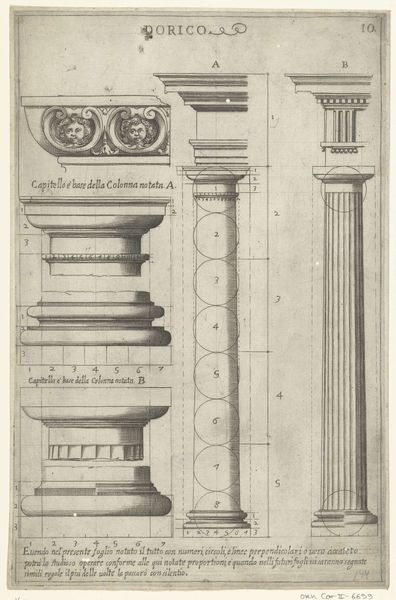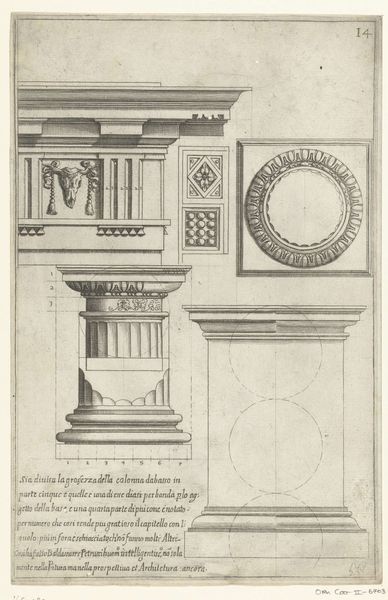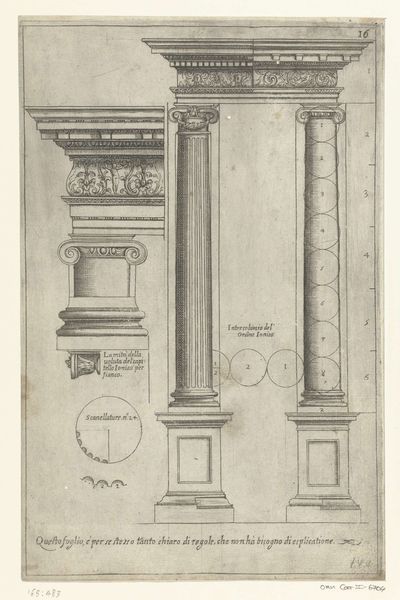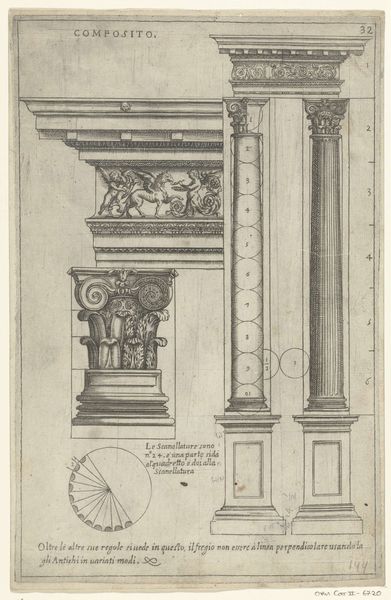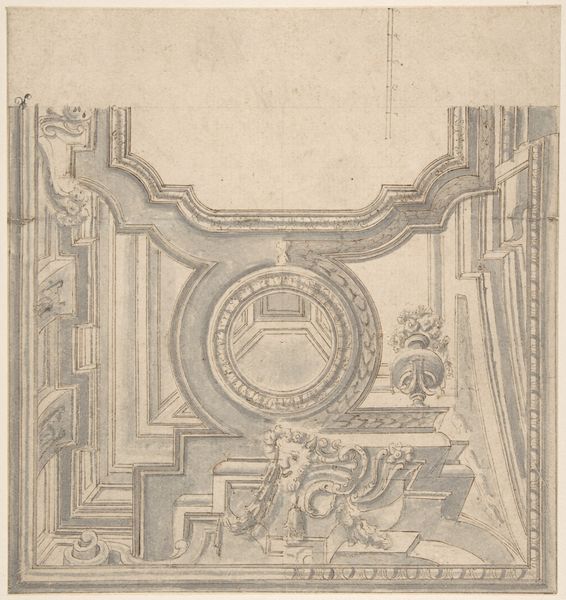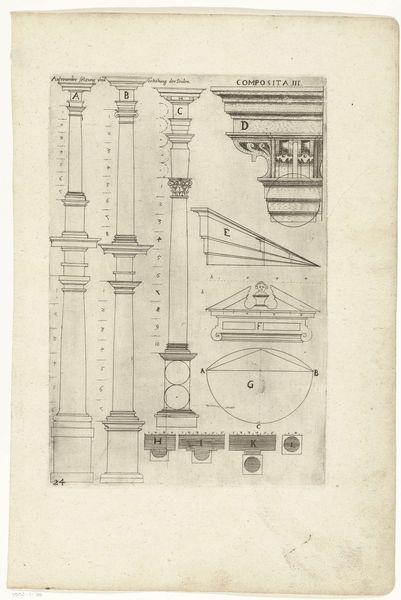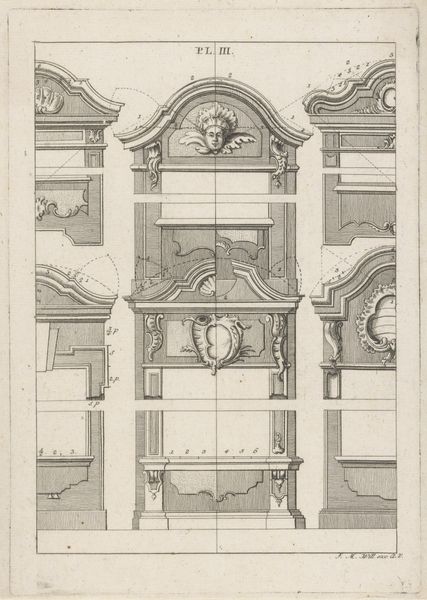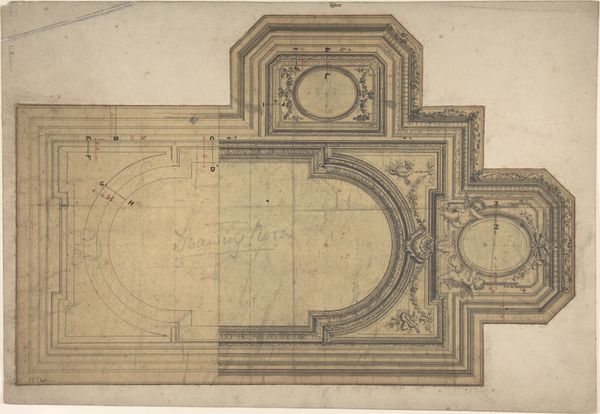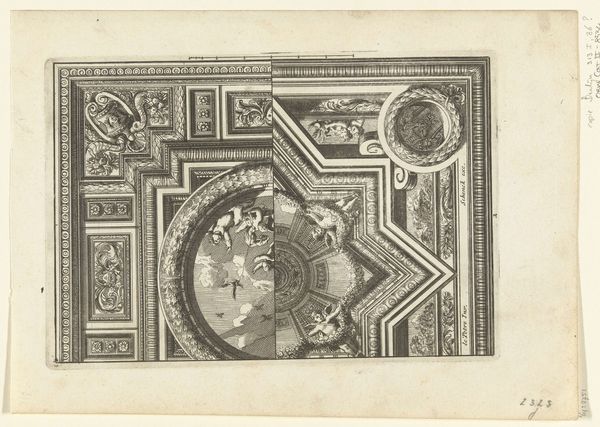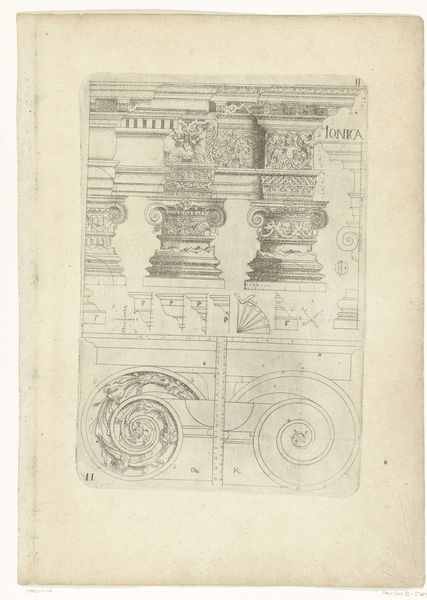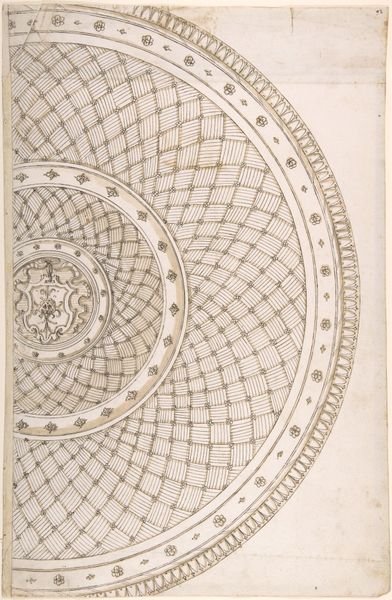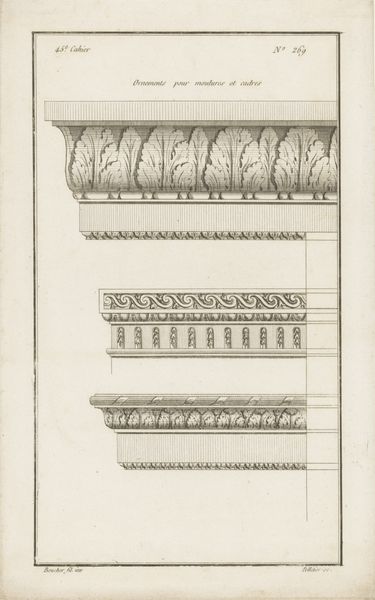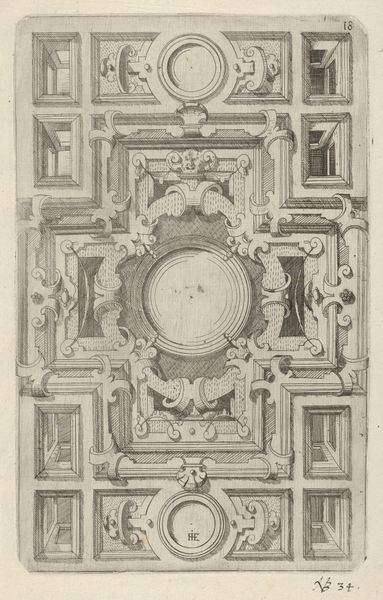
drawing, engraving, architecture
#
architectural sketch
#
drawing
#
neoclacissism
#
form
#
geometric
#
line
#
engraving
#
architecture
Dimensions: height 204 mm, width 145 mm
Copyright: Rijks Museum: Open Domain
Curator: We’re standing before a meticulously rendered drawing by Pierre-Edme Babel, entitled "Ionic Capital," created around 1755. This detailed engraving offers a fascinating insight into neoclassical architectural design. Editor: Immediately, I see…elegance weaponized. All those perfect lines and calculated curves practically shout ‘order’ at you. It’s like a mathematical poem frozen in stone. Do you think these detailed designs were used for an academy or just a study of the era? Curator: Both, really. Babel's drawings like these served as instruction manuals, but they were also status symbols of knowledge and good taste for wealthy patrons and aspiring architects alike. Engravings were circulated widely; printed media drove a fashion for Neoclassical ideals. These shared the vocabulary of the style. It’s about democratizing access, if unevenly, to high culture through accessible formats. Editor: That makes so much sense. So not just inspiration, but actually shaping taste, shaping the built environment of the time. This really grounds my sense of art's purpose: less about individual genius, more about a collaborative, even industrial, creative enterprise. Even with engravings as an element of craft and print culture. It seems this style would spread throughout Europe and later, into America? Curator: Precisely. Look at the obsessive detail – the labelling of parts, the geometric guides for constructing the volute, even the texture in the stone. It reflects a broader impulse in the 18th century towards rationalizing production and design – making the classical world both accessible and, in a way, reproducible. Editor: Yes, ‘reproducible’ hits the nail on the head. There is a definite lack of 'spirit'. Though there may be many artistic virtues, maybe it really shines as an instructional model. A demonstration. Not about expressing emotions. It serves an agenda and the culture well. Curator: Perhaps "lacking in spirit" misses the ambition a bit, perhaps downplaying how the era thought the 'spirit' lay exactly *in* achieving perfect rational form? What does capturing ideal forms in accurate drawing accomplish, after all? A beautiful relic of its own cultural logic, this. Editor: Hmm. I like your point. Thanks for clarifying this engraving's position to better demonstrate the building and material production values of the neoclassical era.
Comments
No comments
Be the first to comment and join the conversation on the ultimate creative platform.
